
When we say ‘Queen Anne’s Lace’, we think of tall, white, umbelliferous wildflower species that proliferate and take over the English countryside in Summer, and to say ‘there’s lots’ is an understatement! You can find them pretty much everywhere in the UK, from sprucing up our roadsides to dappling the forest floors. So, when it comes to planting in your meadows, it’s nice to know which is actually which.
All plants mentioned in this blog are members of the plant family Apiaceae, or the ‘Parsley family’, and houses many of our beloved edibles like parsley, carrot, and parsnips, but also some of the most poisonous plants in the UK. Talk about polar opposites!
Friendlies
Wild Carrot
Cow Parsley
Common Hogweed
Nasties
Giant Hogweed
Fool’s Parsley
Poison Hemlock
Wild Carrot
Wild carrot (Daucus carota) is the official ‘Queen Anne’s Lace’. It is a biennial native to the UK, and stands between 0.5m – 1m tall. Identifiable by its feathery tripinnate leaves, bristly stem, and the characteristic 3-forked bracts under the flowerhead. It has dense, white umbels, with a small collection of red/purple flowers in the centre, and flowers between June and September.
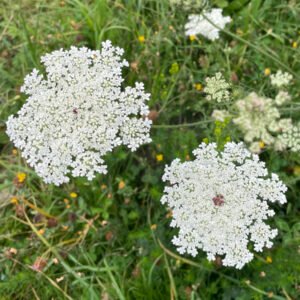
Cow Parsley
Cow parsley (Anthriscus sylvestris) is also a biennial native to the UK, but is taller than the wild carrot, reaching a height of 1m – 1.5m tall. The leaves are tripinnate, the stems are lightly hairy, and, though similar to wild carrot, the white florets are less densely packed together and have no or very small bracts. It tends to flower earlier, between April and June.

Common Hogweed
Common hogweed (Heracleum sphondylium), or sometimes called Cow Parsnip, is a monocarpic sometimes polycarpic perennials, also native to the UK. Standing between 1.5 – 2.5m tall, it has very large white umbels (around 20cm across), large rounded leaves and hollow hairy stems; it’s ability to adapt to the surrounding environment heavily contributes to the success of this plant and these are what we commonly see in ‘inhospitable’ areas like roadside verges.
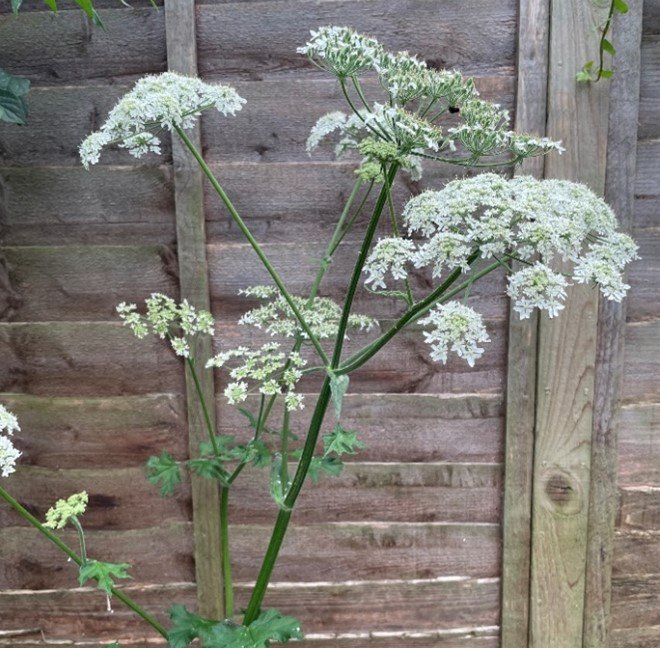

Now for the Nasties!
Giant Hogweed
Giant Hogweed (Heracleum mantegazzianum) is not native to the UK and it is illegal to plant it, but none the less, their numbers are on the rise! Though it looks very similar to common hogweed, they are often even taller (growing all the way to 3m), have characteristic stems with purple blotches, and leaves look slightly like rhubarb leaves but are jagged with hairy undersides.
The sap can cause photodermatitis and in turn cause blistering and scars, so if you get their sap on your skin, be sure to wash the area thoroughly and seek medical advice.

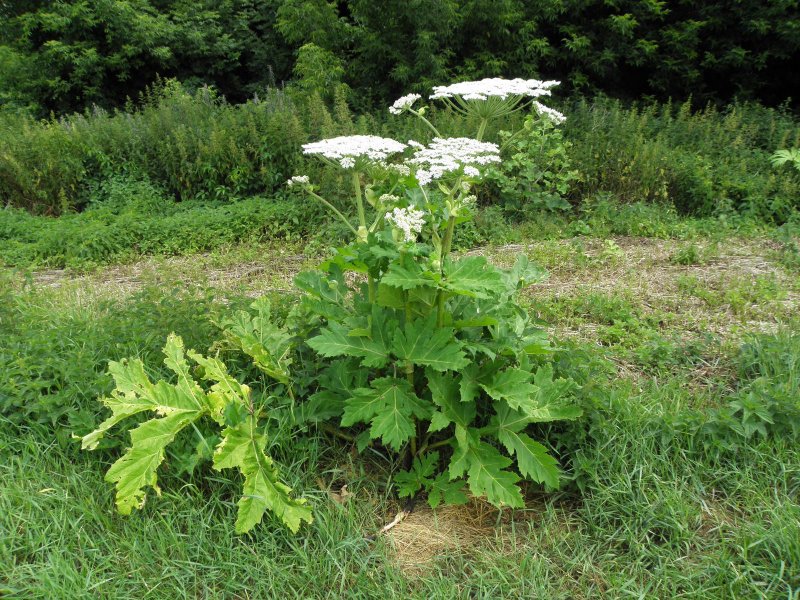
Fool’s Parsley
Fool’s Parsley (Aethusa cynapium) is a poisonous umbellifer native to the UK. Though fool’s parsley looks very similar to the beloved cow parsley, an important difference is that the stems and leaves of fool’s parsley are hairless and smell foul when broken, whilst cow parsley is lightly hairy and smells pleasant.
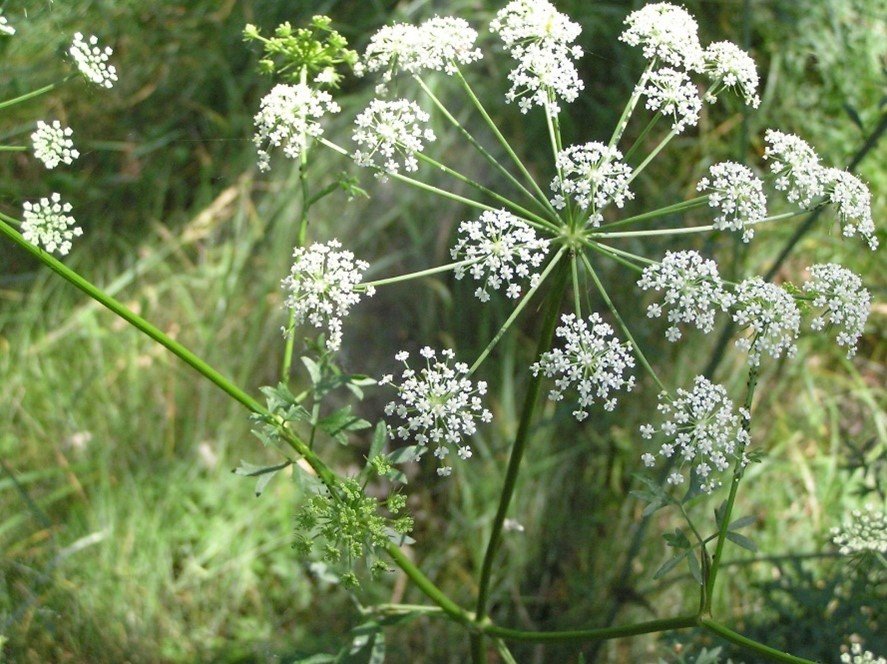
Poison Hemlock
Poison Hemlock (Conium maculatum) is a dangerous plant, one of the most poisonous in the UK and can cause death if ingested. Though it again looks similar to cow parsley, it is easier to distinguish between the two as hemlock is much bigger, produces an unpleasant aroma if the stems or leaves are broken, and have purple blotchy stems.
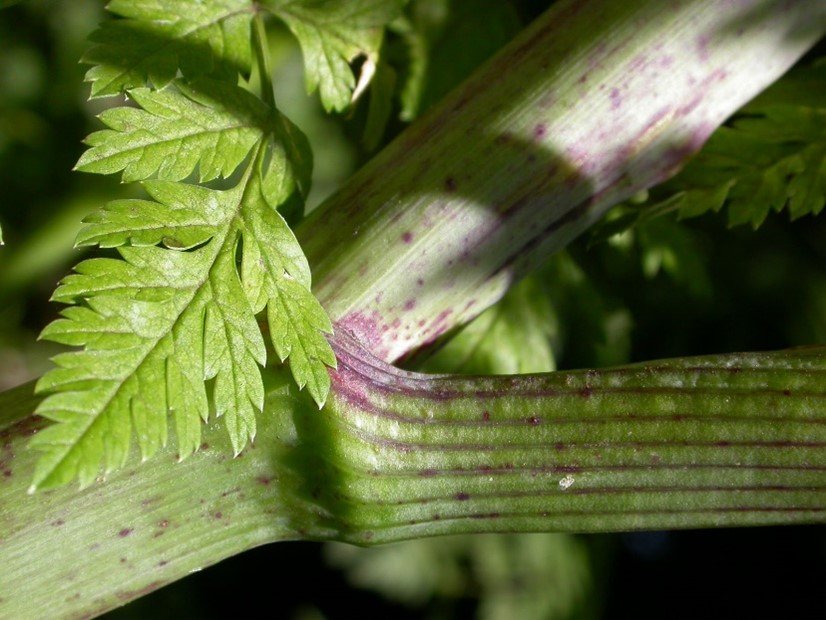
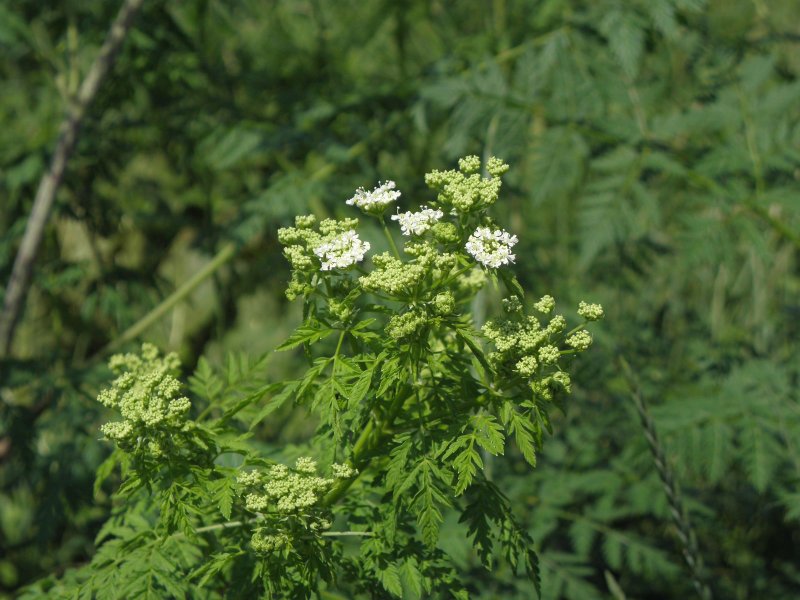
Conium maculatum, POWO (2024). Image Credit: Plants of the World Online, Kew Gardens.
Hopefully we’ve now been able to give you a better understanding of the dichotomous Parsley family. Though they are all lovely and lacy plants, we strongly advise against handling any of them and to contact a professional for advice if you suspect you have any of the nasties in your garden.
Like bears and hippos, these plants are perhaps best admired from a healthy, respectable distance…
If you found this interesting, why not have a look through our other blogs for more gardener-friendly content?








